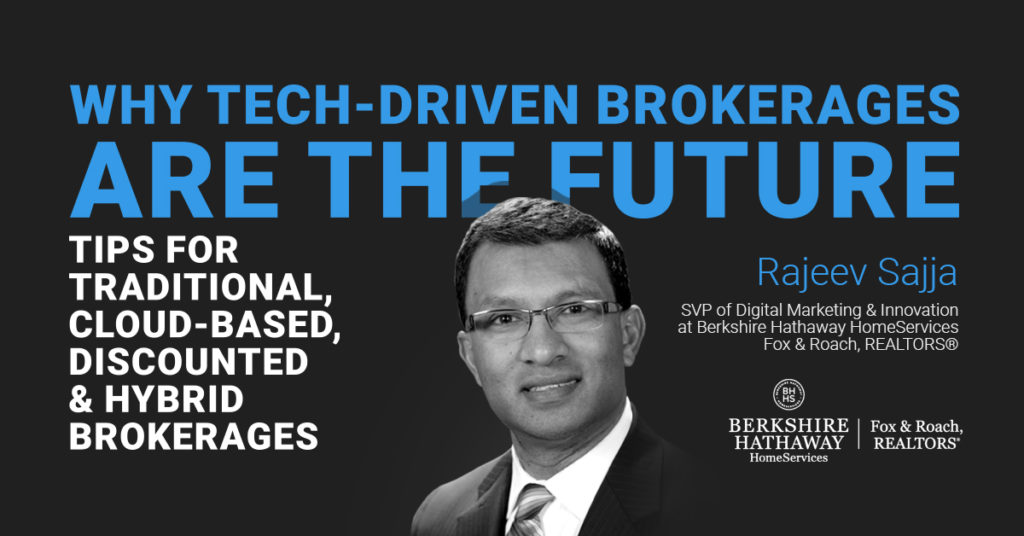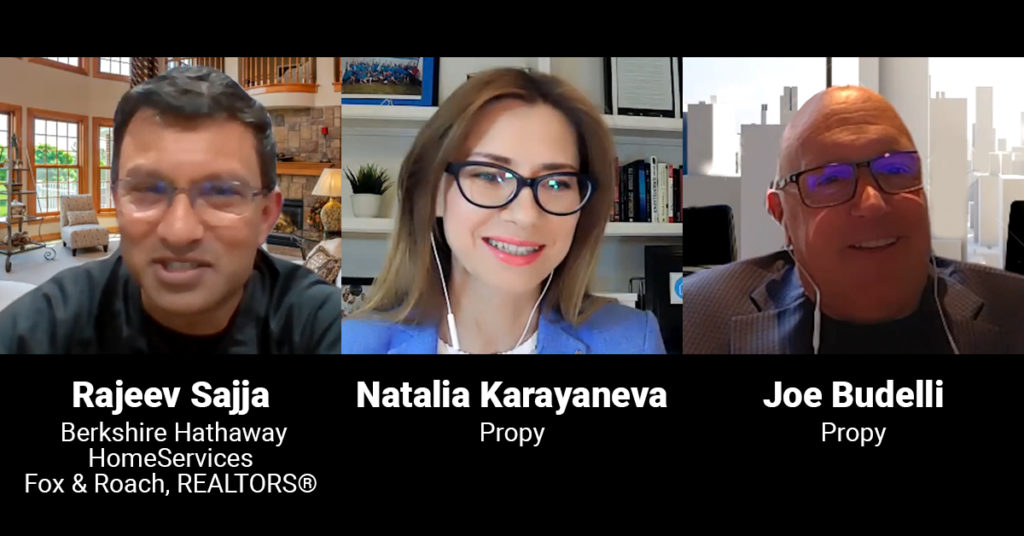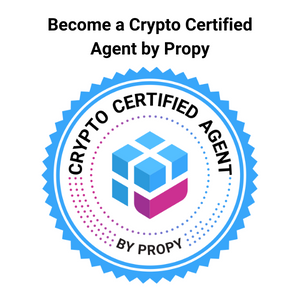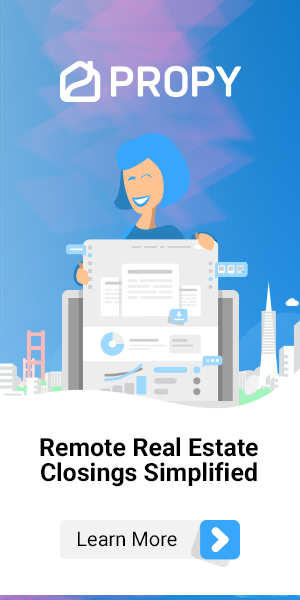Tips for traditional, cloud-based, discounted and hybrid brokerages. Should agents feel threatened by Zillow?

Propy’s weekly webinar Episode #31 is with Rajeev Sajja, SVP of Digital Marketing & Innovation at Berkshire Hathaway HomeServices Fox & Roach, REALTORS®.
Rajeev Sajja, SVP of Digital Marketing & Innovation at Berkshire Hathaway HomeServices Fox & Roach, REALTORS®, along with Propy’s CEO Natalia Karayaneva and Joe Budelli, CRO discuss how brokerages can become tech-driven. Rajeev Sajja will be sharing how to increase technology adoption, new tools available, and why agents shouldn’t be afraid of Zillow.
From technology to marketing
Rajeev Sajja has a Masters degree in Computer Engineering and planned on a career in technology. Initially, in 2000 he first started working with Berkshire Hathaway in a tech position, but as the internet changed, and the trend of online home searches became more prominent, he moved into a marketing position. With a fundamental understanding of technology and a passion for marketing, Rajeev makes marketing come to life with technology, data, and the solutions that they provide. In his 20 years with Berkshire Hathaway, he has seen that the real estate industry has lagged in technology adoption compared to other industries. He wants to empower agents to embrace technology so they can grow their business and be more efficient.
How software solutions help the real estate industry
Rajeev does not believe that technology will ever replace the role real estate agents have, but it’s important to embrace the right technology. Take a look at our current situation. COVID forced us to embrace Zoom calls. This technology was available to use pre-COVID, but it wasn’t until we were in a position where we were forced to adopt it, that agents started to use it on a regular basis. What we’ve seen during the pandemic is that consumer expectations have changed. Consumers want to see more things virtually. Agents are realizing they better embrace the technology or they’ll be left behind.
Tips on agent adoption of technology
There’s a saying that “innovation gets rewarded, but execution gets worshipped”, and that’s so true. We can invent as many tools as we want, Rajeev explains, but the key is the agents have to embrace it or it does no good. Their large agent community is broken down into nine regions, and each region has about 75 offices. They have a massive marketing/technology training force in place across those regions. Whenever we launch a new technology, we get agents involved in testing the tool. Agents are more likely to adopt new technology if they hear the success other agents have using it, rather than having a corporate spokesperson tell them they should use it. We have realtors in each office who give a few hours of their time each week to teach about the new technology. We hold launch webinars, and then weekly training webinars. The combination of all these things leads to organic adoption.
The challenge to get non-tech savvy agents onboard
There are three kinds of agents in the industry – high-tech, low-tech, and no-tech. Agents don’t usually want to learn something new unless it really drives business. We try to automate as much of our technology as possible so that all agents benefit from it. Rajeev says that their goal is to make the tech really easy to use. Too often the people building the tools don’t understand the mind of a real estate agent. Unlike people being paid on salary, an agent doesn’t earn money unless they have a deal, and when they have deals, they also have high stress. The last thing an agent wants is a big learning curve on a new tool. We believe whenever we can make an agent’s life easier with technologies that are easy to use, then even the non-tech savvy agents will adopt it.
Case study: strategy for the high adoption rate of a new tool
We looked at data from our website during COVID to see what consumers were looking for, and our data shows that listings that had video and 3D got greater engagement from consumers than listings with only photos. That gave us an opportunity to offer 3D tours to our agents that they could incorporate in their business. But traditionally, most agents only will use 3D tours on their high-end properties because of the cost. We found a start-up called Asteroom that seemed to solve the price barrier and didn’t compromise on quality. The tool is a simple app on your phone, and you go into each room and take your 360 tours, then the company stitches those together and is returned to you in 48 hours. It’s a do-it-yourself solution, so there is no delay in scheduling photographers.
We offered this tool to eight agents, all with varying levels of tech skills. One agent was someone who has been with our company 33 years and feels that she can’t learn technology at all. That agent did three tours, saying she only contacted customer support once, and that it only took 20 minutes for her to shoot a 4,000 sq ft. home. All of our test agents gave the product a thumbs-up. During our launch, we had five of those agents talk about their experiences with this tool. Four weeks later we have 200 agents who are currently using Asteroom.
How can broker owners increase adoption rates
Most technologies are a solution looking for a problem to solve. Rajeev says it’s critical to talk to your top producers and ask them what is the one thing you hate about real estate. That will reveal a pain point, and perhaps there is a technology that can solve that problem. Don’t get new technology for technology’s sake. Focusing on what agents need and solving their pain points will increase adoption.
Recruiting advice
As brokers, we have to determine our unique value proposition. A good place to start is to read Simon Simek’s book, Start with Why. For example, take a look at automobile logos. You see BMW and immediately think of performance, Mercedes Benz represents luxury, and Volvo, safety. But when you look at real estate logos, what do they mean to a consumer or to another agent? They all seem to represent the same things. Think about your elevator pitch. Answering the question “why you” should drive everything you do.
Rajeev shares that Berkshire Hathaway is revising their Unique Value Proposition (UVP) now, and training managers to be able to articulate that when they talk to recruits. Some of our UVP has to do with culture, growth, and innovation. Technology is certainly part of that, but we are not a technology company doing real estate, we are a solid real estate company that offers the best of technology. With recruiting, you have to be able to answer the question of why should an agent join your company? Will you be able to inspire that agent and draw them in? Everything you do, including your technology will either support that or fall apart.
Should agents feel threatened by Zillow?
Rajeev states that while Zillow certainly has the consumers’ eyeballs, agents really shouldn’t be worried about them. There are plenty of statistics out there that show that 77% of every transaction that happened this year, occurred because of a referral or from an agent’s SOI. Agents have a tendency to chase the shiny penny, but if 77% of your business is coming from your SOI, shouldn’t you be spending at least 77% of your time servicing your sphere? The role of being a trusted advisor will never go away. My advice is, take care of your sphere, and no one will penetrate it. Ignore the noise out there and stay focused on what pays your bills.
Final tips
If you’re an agent – filter out the noise and focus on what you’re good at. Find people who can do what you need to be done instead of trying to do it all yourself. When you find technologies that support your core business, embrace it. Brokers need to really look at their “why”. Make sure the things you do support your core purpose and why agents should come work for you.
The future of the real estate transaction – fully digital and online
The transaction process from finding a home and getting it closed is very stressful for consumers. Innovation will happen over the next few years that will make this more seamless. If we can simplify the process from looking at houses virtually, the client-agent relationship, to closing the transaction, especially if this could all be done from a single app would make it easier on the consumer.







